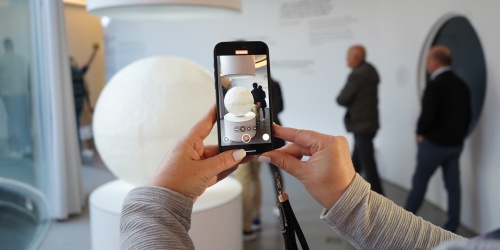Galáctica and the OAJ Inspire Seven European Countries
The visitors to Galáctica and the OAJ aimed to learn more about astrotourism and to contribute to the fight against light pollution. This combination of tourism and science takes inspiration from the management model of Galáctica and its close link with the Javalambre Astrophysical Observatory.
The participants include regional development centers, energy and environmental agencies, lighting clusters, regional administrations, and national tourism organizations from seven European countries: Slovenia, Croatia, Portugal, Montenegro, Italy, Greece, and Spain. In Spain, the main partner is the Provincial Government of Teruel, whose technical staff are guiding the visitors during their tour of the province.
Stylianos Pyrzas, coordinator of Galáctica at the Centro de Estudios de Física del Cosmos de Aragón (CEFCA), presented the process of creating Galáctica. His overview traced the path from the origins of the Observatory to the development of an interactive, audiovisual center open to all audiences, where school visits double each year. The number of visitors in 2025 already far exceeds the 7,600 inhabitants of the Gúdar-Javalambre region, illustrating the positive impact the project has had on the area.
The participants in this session aim to assess policies and standards for dark skies and to define transnational guidelines that can serve as references for the countries involved in the project — governance criteria that could later be adopted across the Euro-Mediterranean region. The program continues through the Gúdar-Javalambre region, whose head of tourism, María Jesús Rambla, also welcomed the group at Galáctica.
The visit also includes presentations on stellar tourism at the Monasterio del Olivar (Estercuel), the business experience of Astroándalus, and examples of thematic astrotourism products and services designed to identify replicable models and business opportunities.
The project’s main goal is to accelerate the reduction of emissions and light pollution, protect nocturnal biodiversity, and create astrotourism routes and services that generate off-season economic activity in rural areas. In doing so, it also aims to position Teruel as an international dark-sky destination.
The project is part of the Interreg Euro-MED 2021–2027 program and will run for 33 months (2025–2027).


